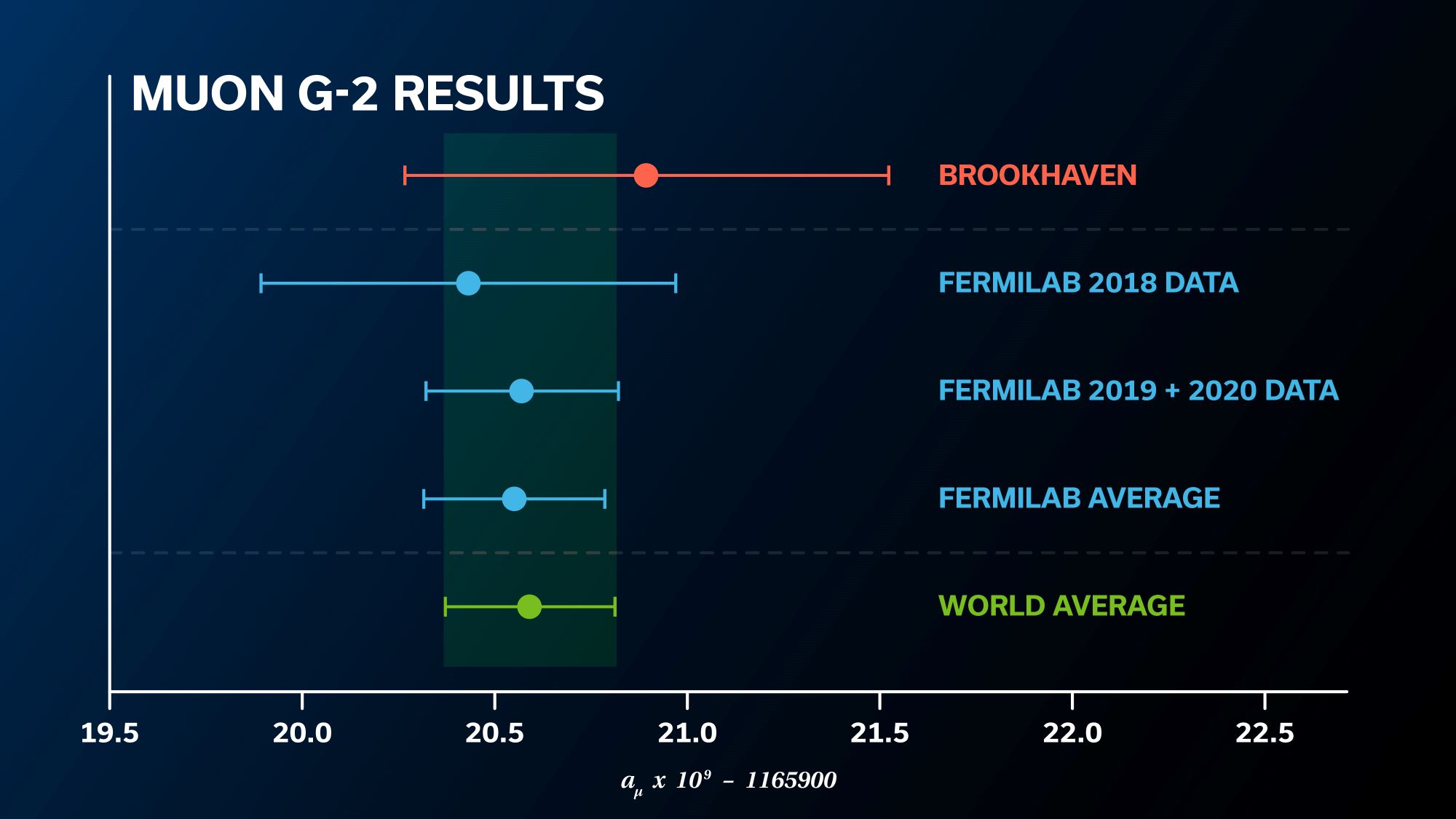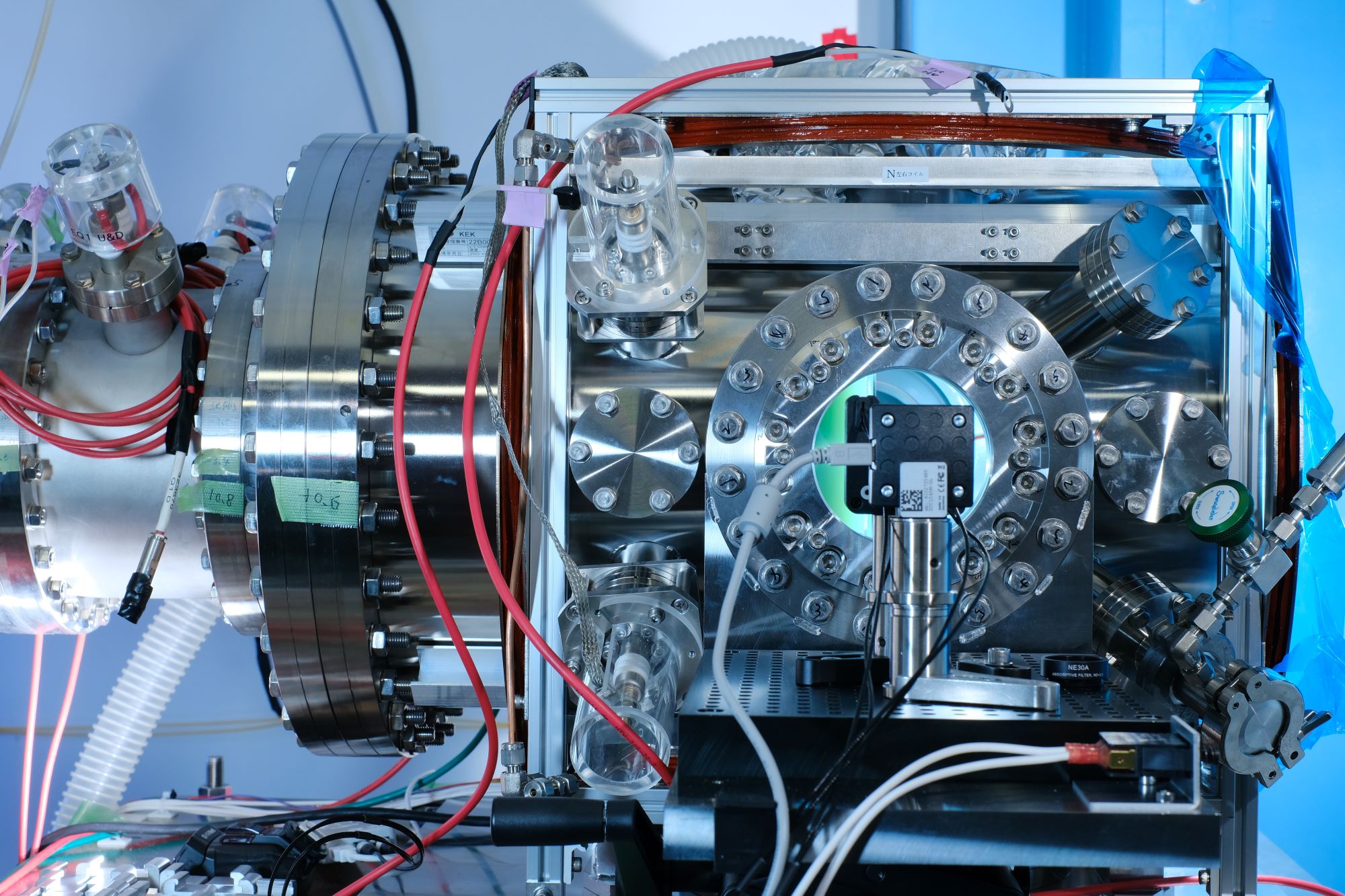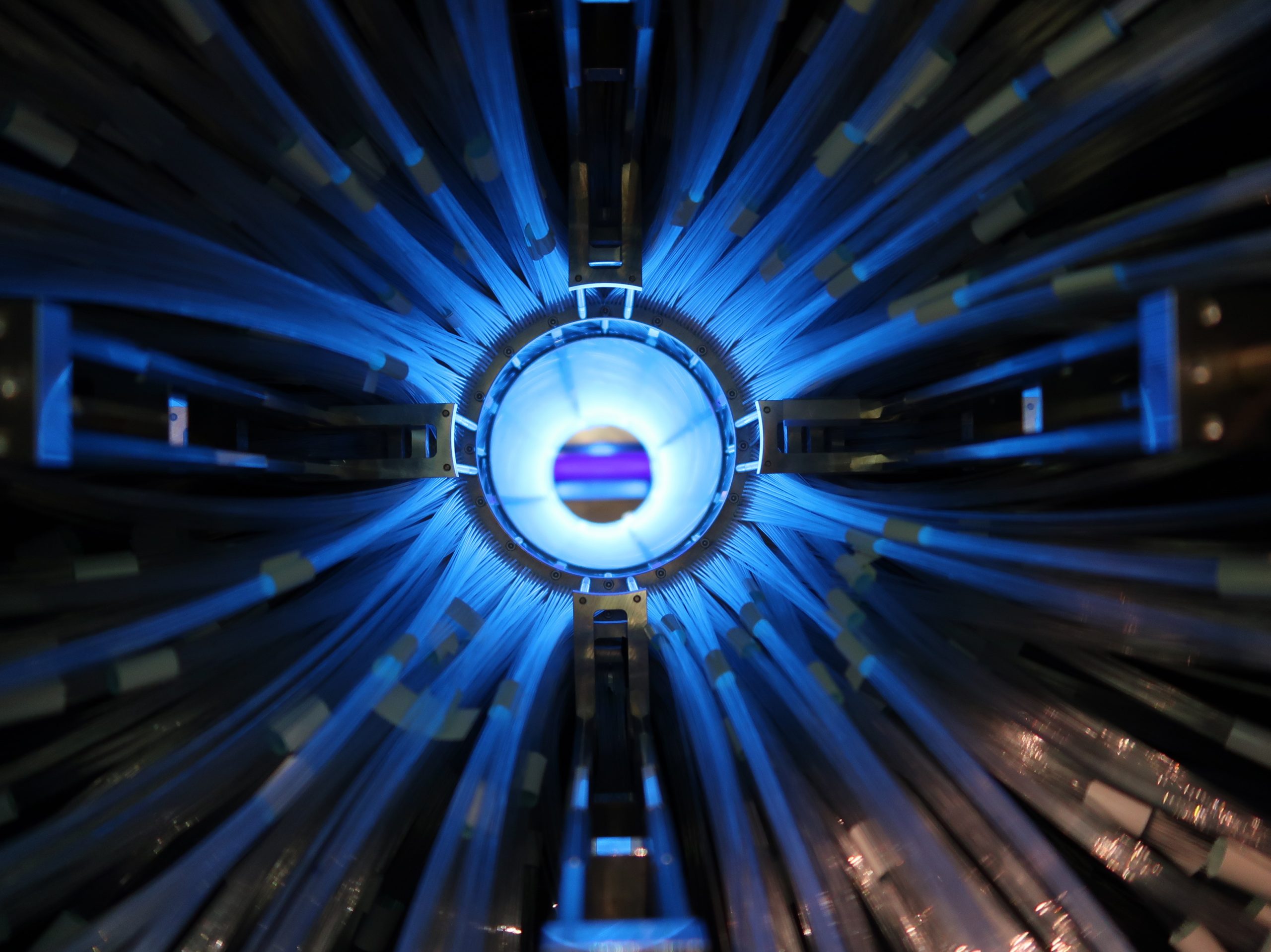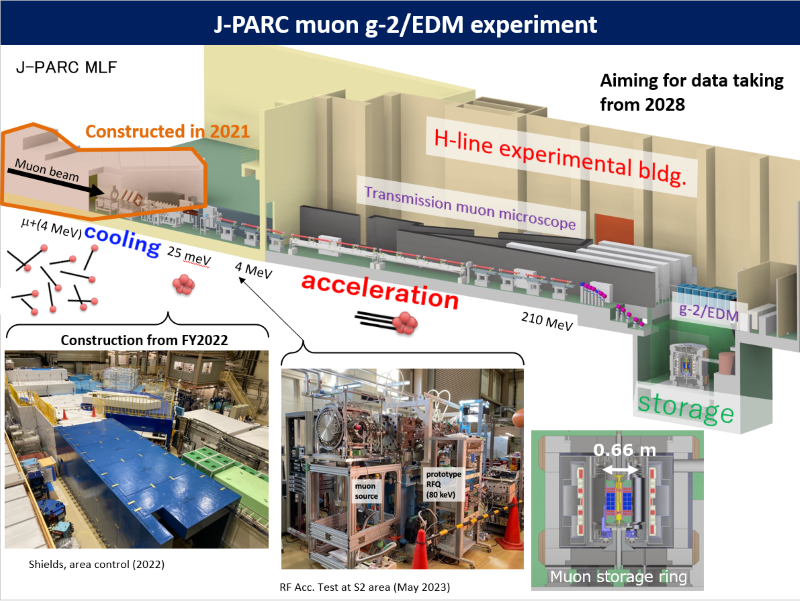- Topics
Approaching New Physics: Latest Updates in Muon g-2 Research
August 20th, 2023
On August 10th, 2023, at 10:00 AM Central Time (U.S.), the early hours of August 11th in Japan, Fermi National Accelerator Laboratory (FNAL) announced the latest results of the Muon g-2 (anomalous magnetic moment) experiment.
The anomalous magnetic moment refers to the strength of the magnet possessed by subatomic particles, attributed to quantum effects. While it can be meticulously calculated by the Standard Model of particle physics, the presence of unknown particles or forces could lead to significant deviations, especially observable in muons. In the case of the muon g-2, there has been a notable discrepancy between its experimental measurement and the Standard Model prediction for the past 20 years. The first results from the FNAL experiment announced in 2021 confirmed the discrepancy two decades ago. The precise measurement of muon g-2 is attracting the attention of particle physicists around the world as a way to search for signs of “new physics” beyond the Standard Model.
-

Due to the large amount of additional data that is going into the 2023 analysis announcement, the Muon g-2 collaboration’s latest result is more than twice as precise as the first result announced in 2021. Image: Muon g-2 collaboration
Following its initial results announcement in 2021, FNAL has undertaken additional measurements and analyses, leading to the unveiling of a new measurement for the muon g-2. This latest update reveals a value that is consistent with the prior results, with a significantly enhanced level of precision, nearly doubling the accuracy. The new results confirmed a consistency that strengthens the findings. The measurement has now achieved an unprecedented precision, reaching an astounding 0.20 ppm (parts per million).
In the meantime, there has been progress in the calculated values of the Standard Model. New research methods and data are being used to validate and improve the accuracy of the calculated values. In pursuit of achieving even higher precision in these calculations, new puzzles have also been found that must be studied. Currently, research is underway to comprehensively understand these theoretical calculations results in a unified manner.
FNAL Press Release:
Muon g-2 doubles down with latest measurement, explores uncharted territory in search of new physics (fnal.gov)
https://news.fnal.gov/2023/08/muon-g-2-doubles-down-with-latest-measurement/
Original method, J-PARC muon g-2/EDM experiment
Institute of Particle and Nuclear Studies (IPNS), KEK is pursuing its own muon g-2 research at J-PARC, a large proton accelerator facility located in Tokai village, Ibaraki, utilizing methods distinct from FNAL’s approach. Just as significant discoveries in the past, CP violation in B mesons, neutrino oscillations, and the discovery of the Higgs boson have been confirmed through verification from multiple experiments. If deviations are observed in the muon g-2, it becomes crucial to determine whether the experimental values have no issues. It is imperative to independently verify the results using methods separate from FNAL’s approach.
The muon g-2/EDM experiment being developed at J-PARC (Spokesperson: Tsutomu Mibe, IPNS) involves a pioneering approach. After cooling down the muons using a world-first proprietary technique, they are re-accelerated. This method enables the creation of a highly focused and intense beam, akin to a laser, allowing for ultra-precise measurements using a compact experimental setup that is only one twentieth the size of the apparatus used at FNAL, adopting brand-new methods in measurement and analysis.
-

Muon cooling system
Subatomic particles hold not only magnetic moment but also an electrical property called Electric Dipole Moment (EDM). When there is an imbalance of charge within a particle (or when the particle lacks spherical symmetry), its EDM becomes nonzero. However, according to the Standard Model, this effect is extremely small. The discovery of EDM would provide evidence of violation of time-reversal symmetry. Furthermore, if the value of g-2 deviates, there is a possibility of a significant EDM, making the exploration of EDM crucial in understanding the underlying causes of the g-2 anomaly. In the muon g-2/EDM experiment at J-PARC, instruments are suitably set up for measuring EDM, allowing for a more sensitive search for EDM.
The muon g-2/EDM experiment collaborates with the SuperKEKB/Belle II experiment at the Tsukuba campus, KEK to embark on the quest for new physics. By obtaining necessary data from the Belle II experiment, the standard model calculations for g-2 will be verified to improve the calculation precision. Moreover, there is a possibility that the deviations observed in both the Belle II and muon g-2 could originate from the same cause. If these deviations are confirmed through both experiments, it could provide insight into the underlying physical laws, potentially serving as a lead towards the discovery of new physics.
With the aim of starting the experiment in 2028, current efforts are underway at J-PARC to conduct muon cooling tests. Concurrently, the J-PARC proton acceleration group and the SuperKEKB electron acceleration group are collaborating to develop a linear accelerator for muon. The KEK Cryogenics Science Center is actively engaged in advancing the development of storage magnets and magnet field measurements devices. Furthermore, at the KEK Tsukuba campus, spiral injection feasibility tests using electron beams are being conducted, and the development of positron track detector is also in progress in collaboration with the KEK Mechanical Engineering Center.
Lastly, we are pleased to share comments from Dr. Brendan Casey, senior scientist and a former co-spokesperson of the Muon g-2 experiment until July at FNAL regarding the significance of the latest results along with a message filled with anticipation for the muon g-2/EDM experiment at J-PARC. He is scheduled to give a scientific seminar in the IPNS invited seminar on September 13th.
■Significance of the latest results
“This result comes close to making the final statement about what we can do with a large storage ring. We’ve almost eliminated all the systematic uncertainties we were worried about.”
■Expectations for the J-PARC g-2/EDM experiment
“The one problem with our result is it shares many fundamental assumptions with the Brookhaven experiment because it uses the same techniques. The J-PARC g-2/EDM experiment is very exciting because it will be the first time in decades that a collaboration tries to make this measurement with new techniques.”
J-PARC muon g-2/EDM experiment
The muon g-2/EDM experiment is developed at J-PARC to achieve ultra-precise measurements of the muon g-2 and EDM. The collaboration involves approximately 110 researchers from different countries worldwide. The g-2 value has shown deviations from the Standard Model predictions based on prior experiments, and this experiment at J-PARC aims to verify these deviations. With the world’s first muon cooling and acceleration facility, along with storage magnets one twentieth the size of the predecessor, the experiment strives to measure g-2 with accuracy of one part in ten million.








